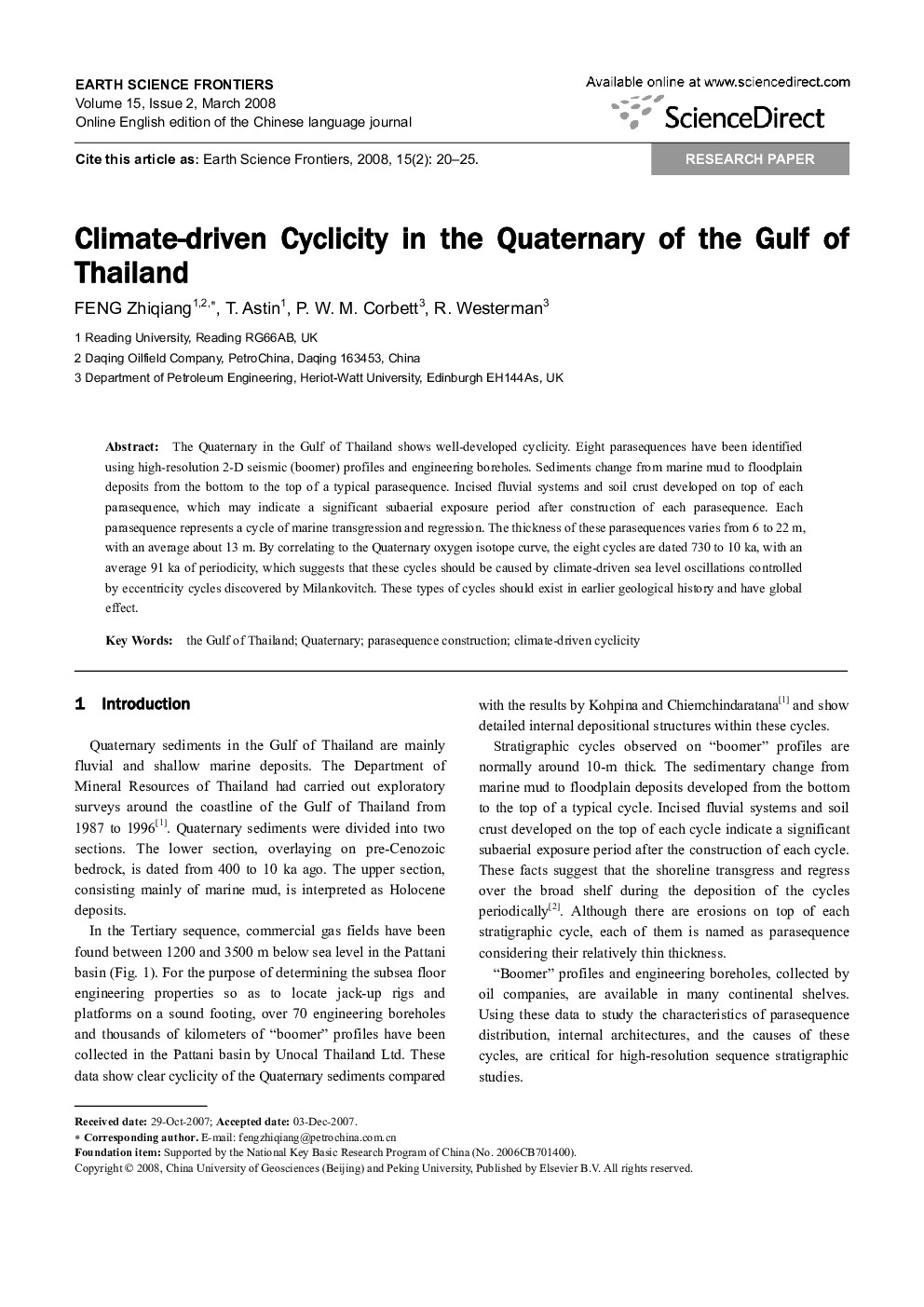| Article ID | Journal | Published Year | Pages | File Type |
|---|---|---|---|---|
| 4701637 | Earth Science Frontiers | 2008 | 6 Pages |
The Quaternary in the Gulf of Thailand shows well-developed cyclicity. Eight parasequences have been identified using high-resolution 2-D seismic (boomer) profiles and engineering boreholes. Sediments change from marine mud to floodplain deposits from the bottom to the top of a typical parasequence. Incised fluvial systems and soil crust developed on top of each parasequence, which may indicate a significant subaerial exposure period after construction of each parasequence. Each parasequence represents a cycle of marine transgression and regression. The thickness of these parasequences varies from 6 to 22 m, with an average about 13 m. By correlating to the Quaternary oxygen isotope curve, the eight cycles are dated 730 to 10 ka, with an average 91 ka of periodicity, which suggests that these cycles should be caused by climate-driven sea level oscillations controlled by eccentricity cycles discovered by Milankovitch. These types of cycles should exist in earlier geological history and have global effect.
